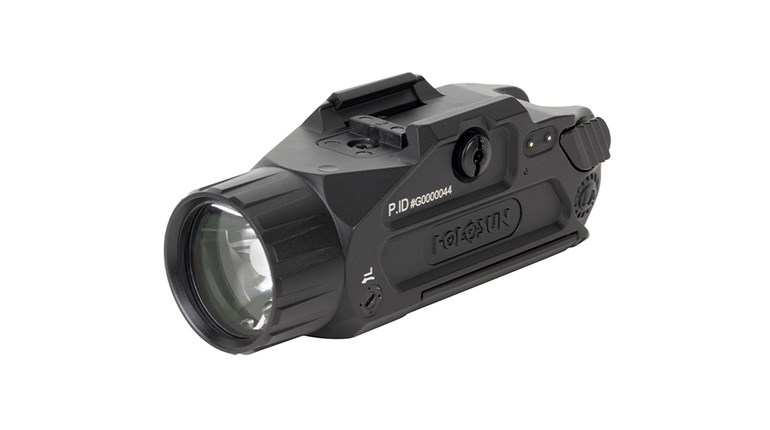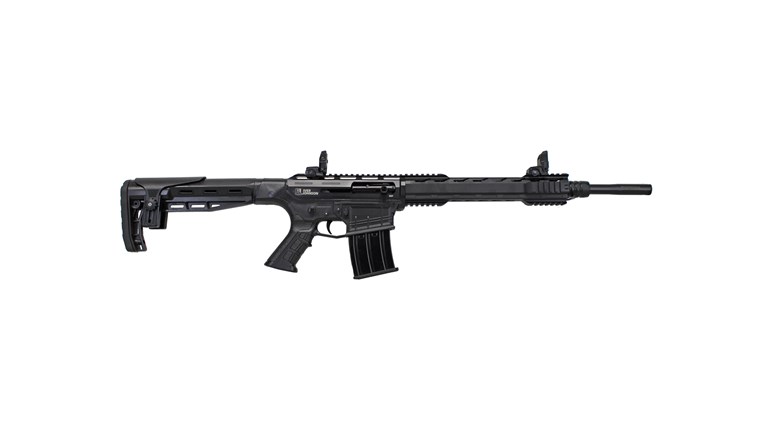
The year was 1950. North Korea invaded South Korea and Americans were watching The "Texaco Star Theater" on television. Movie theaters were showing "King Solomon's Mines" and radios were playing "Mona Lisa" by Nat King Cole. The first credit cards were introduced, and Remington brought out a pump-action shotgun that would make history.
As we are constantly reminded in the media, it was a simpler time. World War II was over and we won, the depression was fading from memory and the average salary was a whopping $3,210. People were feeling good about the country and our future. Gas was 18 cents a gallon, inflation was one percent, a new car cost $1,500 and this new shotgun would set you back $80.80. Shooters recognized the value and, with anticipation of nothing but better times ahead, the 870 sold well.
Fifty-eight years later Remington is about to build its ten millionth Model 870, the best selling pump-action shotgun in history. While the vast majority of these shotguns have been used for blasting flying targets, both feathered and clay, the 870 has always had a fighting side. Even back in those simpler times of that first year of production they had a Model 870R Riot Grade, with a 20-inch barrel. Actually, what we now call a tactical shotgun went by riot gun until recently. About the same time as the Rodney King mess, we realized that we no longer try to stop riots for fear of offending somebody, so the name had to be changed. No matter, the design is pretty much the same. A short barrel, extended magazine and a color scheme designed to make it look menacing.
For decades this style of shotgun was sold primarily to law enforcement and the military. It was assumed the civilian market wasn't interested or couldn't be trusted. But then, simpler times are long past and life is now more complicated, uncertain and scary. The concept of a civilian fighting shotgun, while maybe still not completely embraced by the manufacturers, has defington emitely taken hold with the gun-owning masses. The Model 870 Remington emerged as the premiere shotgun for this use. Right or wrong, many believe that pump shotguns are more dependable than semi-autos. We have also been convinced that the sound of a slide-action being worked will release the bowels of anybody intending to do us harm and send them squirming away—never to darken our door again. But perhaps the most important reason is that the 870 is tough, dependable and very affordable. Even today the 870 Express has a street price of around $300. An entire industry has sprung up around converting these shotguns into fighting tools. Magazine extenders, pistol grips, tactical stocks and fore-ends, along with sighting systems, oversized safeties and attached ammo carriers ensure the Model 870 does not suffer from a lack of bolt-on accessories designed to make it a better fighting shotgun.
Clearly the civilian market for tactical shotguns is growing. Most experts agree a shotgun is far superior to either a handgun or a rifle in a self- or home-defense situation. They are easier to hit with, particularly when compared to a handgun. A blast of buckshot is more than powerful enough to solve just about any problem and pellets are far less likely to penetrate walls and hit unintended targets than bullets. Then, of course, there is always the intimidation factor when the bad guy hears the sound he recognizes from a thousand movies and TV shows. Some "experts" say it doesn't matter—but I know it would give me pause. But then, I have witnessed the result of buckshot hitting something alive it's a sobering sight.
Officially, Remington still doesn't get it; it opens the 870 Tactical web pages with the statement: "Still the #1 choice of top law enforcement agencies across the country..." Civilian shooters aren't even mentioned. On the other hand, it might just be smart marketing. Most gun buyers recognize if the professionals are using these shotguns, they must be dependable. What better way to entice the civilian market than by pointing out that the 870 shotgun is the choice of serious professionals who depend on their firearms to stay alive?
Serious students of fighting guns usually agree the 12 gauge is by far the best choice for a tactical shotgun. Part of that is power, but also because that's where all the ammo development occurs. The options for buckshot, slugs, birdshot and less-than-lethal ammo are much greater with the 12 gauge. I recently did some shooting with three of the newest Remington Model 870 Tactical shotguns.
The Model 870 Express, seven-shot is the most affordable of the three, with an MSRP of $505. The gun has an 18-inch barrel and a single bead front sight on a ramp. The two-shot magazine extension brings the capacity up to six-shots in the magazine and seven shots total with a shell in the chamber. The gun features a Butler Creek folding stock, which folds to use the gun with just a pistol grip or it swings back for full-length, off-the-shoulder use.
While every shooter is different, I had some trouble with the latter position. The line of the stock is actually well to the left of the centerline of the shotgun when the stock is in the full-length position. This positions my face too far to the left and so my shots tend to hit to the left. When I twist my face over the top to line up with the barrel, my eye is positioned too high. Also, the section of the stock where my cheek contacts is nothing more than a square corner with a slight radius, which is painful under recoil. It's manageable with low-recoil buckshot or slugs, barely tolerable with full power 2 3⁄4-inch loads and unmercifully brutal with full power 3-inch loads.
I much prefer to use this shotgun in the folded position and with the pistol grip only. As is the case with any pistol grip shotgun, the 3-inch loads are still painful, but compared to the beating my cheek takes with the unfolded stock, it's a little love tap. Besides, 3-inch loads are not the best choice for fighting, as the time to recover from recoil is too long. Low recoil or standard 2 3⁄4-inch loads are very manageable in this shotgun using the pistol grip.





































